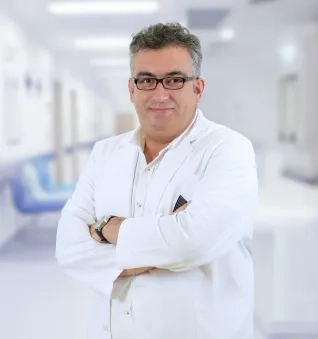Alo Yeditepe
Alo Yeditepe
Can Permanent Treatment Be Provided for Rhythm Disorders?
Rhythm disorders are one of the most frequently complained issues in terms of heart health, and this problem, which occurs at all ages, can be caused by a simple reason or hide a much larger problem. Cardiology Specialist Prof. Dr Tolga Aksu reminded that rhythm disorders, which can be life-threatening, can manifest themselves with an underestimated symptom such as palpitations.
Rhythm disorders, which are common in 20-30 percent of the population, are quite common in people of all ages. Our specialist, who explained that this problem usually manifests itself with heart palpitations in the patient, explained that this situation can become a situation that seriously affects the daily life of the patient. Reminding that some rhythm disorders may pose a life risk to the patient, Yeditepe University Kozyatağı Hospital Cardiology Specialist Prof. Dr. Tolga Aksu: “The rhythm disorder, which occurs for a simpler reason, can show similar symptoms in the patient, which is also life-threatening. In both cases, there is only a feeling of palpitations. Therefore, it is extremely important to identify the underlying cause promptly. Therefore, we tell patients that if their palpitations affect their life, you should definitely consult a cardiologist.”
“Not Every Palpitation is an Arrhythmia”
Stating that it is important to distinguish between rhythm disorder and palpitations at this point, Prof. Dr. Tolga Aksu continued his words as follows: “Not all palpitations are caused by rhythm disturbances. Many situations encountered in daily life can cause an increase in heart rate. For example, even falling in love is an example of palpitations that can cause an increase in heart rate. After all, these are physiological responses that the body has to give. It is not a rhythm disorder”. Assoc. Prof. Dr. Aksu pointed out that the palpitations that occur for no apparent reason may be a symptom of rhythm disturbance.
“Beware of Rhythm Disorder in the Elderly”
Noting that arrhythmia can be seen at any age and stating that the type of this disorder varies according to the age of the patients, Prof. Dr Tolga Aksu said: “The rhythm disorder seen in young people is mostly caused by the atria of the heart. In this case, palpitations have a good prognosis and although the quality of life of the patient is impaired, they are not life-threatening. But rhythm disorders that occur in older ages are caused by the heart ventricles and these are very important. This situation, which can be defined as dangerous, can pose a life-threatening risk for the patient."
The Most Common Cause of Atrial Fibrillation Stroke
Stating that atrial fibrillation is the most common permanent rhythm disorder in the world and in Turkey, Prof. Dr. Tolga Aksu gave the following information: “Atrial fibrillation occurs over 80 per cent in those over 20 years old, and between 5 and 10 per cent in young people. Atrial fibrillation is the most common cause of stroke. Paralysis due to atrial fibrillation may cause more permanent problems than strokes due to clots thrown from the plaques in the neck, so when the patient experiences atrial fibrillation, the focus is on eliminating the possibility of paralysis, not palpitations. Blood-thinning treatment is initiated according to the patient's risk profile and accompanying diseases. After the risk of stroke is eliminated, palpitations are treated by taking into account additional complaints such as shortness of breath and chest pain”.
“99% of Treatments Are Permanent”
Emphasizing that 99 percent permanent treatment can be provided in arrhythmia, Prof. Dr. Tolga Aksu explained that rhythm disorders that are seen in young people and are not life-threatening can be treated with the Catheter Ablation method. Prof. Dr. Aksu continued his words as follows: “The treatment approach can be changed since the disorders caused by the heart ventricle can be seen together with different heart diseases such as heart failure. In this case, we apply a treatment consisting of ablation or medication or a combination of the two”.
Concerning Catheter Ablation, which is a treatment of rhythm disorder performed by giving radio waves, Prof. Dr. Tolga Aksu gave the following information: “This method is used in rhythm disorders that cannot be controlled with drugs or when patients do not want to take medication for life. The procedure is basically performed by numbing the needle insertion sites with local anesthesia and, in some cases, under general anesthesia. Since no incision is made, they can return to daily life in a short period of 2 days at most."
Conditions Triggering Permanent Rhythm Disorder
Yeditepe University Hospitals Cardiology Specialist Prof. Dr. Tolga Aksu stated that situations such as obesity, not exercising, not paying attention to cholesterol, smoking, and consuming alcohol trigger permanent rhythm disturbance, and said that alcohol consumption dramatically reduces the success of treatment.
Press Coverage: aksam | posta | gazetevatan | haberler | cnnturk | haberler | mynet
This content was prepared by Yeditepe University Hospitals Medical Editorial Board.
”
See Also
- What is Heart Rhythm Disorder (Arrhythmia)? Symptoms and Causes
- What is Sudden Cardiac Death? What are the Symptoms?
- Risk Factors in Heart Diseases
- How Do Heart Disease Risk Factors Affect Women and Men?
- What is a Heart Attack? What are the Symptoms of a Heart Attack?
- Carotid Artery Disease
- What is Intravenous Ultrasound (IVUS)?
- Is Your Heart Ready For Winter?
- The Risk of High Blood Pressure Increases as You Go to High Altitudes
- By 2025, Hypertension Patients Are Expected to Reach 1.5 Billion
- Misconceptions about the Female Heart
- Experts Warn: In Case of Fainting, Consult a Cardiologist First
- Causes of Arhythmia Can be Displayed in 3D
- Coronary CT Angiography (Virtual Angiography)
- Effort Test
- Heart Attack Causes and Symptoms
- Technique Developed by a Turkish Doctor Has Become Part of Literature; Is Now an Alternative to Pacemakers
- Professors from America Came to Watch the Technique Developed by the Turkish Physician on Site!
Alo Yeditepe




